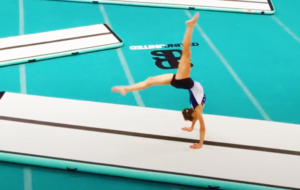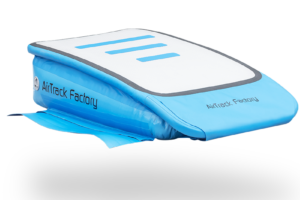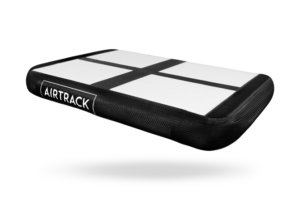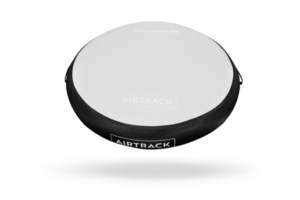Gymnastic Skills for Beginners
Starting gymnastics is a great way to improve physically, mentally, and socially. Whether you have gold medal aspirations or just looking to boost your sport performance, gymnastics training will build your strength, stamina, balance, and flexibility making gymnastics a great gateway to other sports.
As a gymnast, you quickly learn the building blocks of the sport to help you progress as an athlete. Basic skills such as forward rolls, handstands, and cartwheels are some of the foundational gymnastic skills you first learn in classes. These movements build off one another in order to achieve harder skills such as back handsprings and other flips.
Even as you get older, it is imperative that you continue training your foundational skills to perfect your technique. In this article, we’ll take a look at several basic gymnastics skills to develop when you’re first starting out.
Here are some simple drills and exercises you can do to start prepping your body for gymnastics:
Hold a plank –
To start, put your arms directly under your shoulders, hold your body perfectly straight (like a wood plank), squeeze your glutes, and hold. It can be helpful to be on something cushioned like an AirTrack or yoga mat, to minimize the impact on your elbow and ankle joints.
• Improves strength in your arms, core, and quads
• Increases stability and balance
• Helps posture
• Improves flexibility in shoulders, feet, and hamstrings
Wall sits –
To do a proper wall sit start with your back flush to the wall, and position yourself like you are sitting in a chair. Your legs should be at a 90° angle. Hold this position without touching your legs for as long as you can.
• Tones and strengthen muscles
• Improves posture
• Increases balance
• Increases core muscles
Jump rope –
When jump roping, you have to make sure your knees and feet are close together. When jumping, your feet should lift 1-2 inches off of the ground. To minimize joint and bone damage it is highly recommended to have a soft landing surface. An AirBoard or AirTrack provides a pressure-customizable jumping surface that can range from stiff to soft, mimicking the feeling of jumping on sand.
• Improves coordination
• Increases stamina
• Strengthens entire body
• Jump rope helps increase bone density
• Helps with balance
Flamingo stand –
To do this, put your foot on the inside of your opposite leg and try to balance.
• Helps improve balance
• Increases strength and stability in ankles, calf muscles (achilles tendon, gastrocnemius, soleus)
• Injury prevention
It is important to develop and master basic skills to help you build up the strength needed to continue moving forward in gymnastics. Each skill is a gateway that will assist you in achieving harder moves. Practice, strength building, and stretching are the best ways to help yourself get to each checkpoint in gymnastics. Now we will go over 11 basic gymnastics skills, what they are and how to do them.
Forward Roll
A forward roll is the most elementary of these gymnastics skills for beginners. Forward rolls will build strength and spatial awareness to ready you for harder moves.
To do a forward roll;
• Hold your hands up to the sky
• Go into a ball
• Put your hands on the floor
• Look between your legs
• Make sure your neck is tucked
• Push off with your legs
• Roll over
• Stand back up, keeping your hands to the sky
Backward Roll
A backward roll builds off of the prior knowledge of a forward roll when it comes to gymnastics for beginners. . It is considered to be a bit more challenging than a forward roll, as the reverse motion can sometimes take some getting used to. Repetition and good form are key in perfecting tour backward roll.
• Start with your hands up to the sky
• Go into a ball
• Put your hands on the floor
• Look between your legs
• Make sure your neck is tucked
• Push off with their legs
• If needed, ask a friend, parent, or coach to support your legs.
• End with your hands to the sky
As always, practice is key!
Handstand
A handstand is where you are upside down holding yourself up with your arms. Handstands help build strength in your shoulders and prepare you for harder tricks (i.e. round offs). To have this perfected you must be able to hold it for numerous consecutive seconds and have good form. This is one of the most popular beginner gymnastics moves.
Tricks to help you get a better handstand;
• Walk your legs up a wall until you are in a handstand position
• The wall helps hold your balance while you build strength in your arms and find the correct form
• Squeeze your muscles
• Engaging glute and abdominal muscles help keep you balanced
• Push through your arms
• Pretend to push the floor away to lengthen your body
• Keep your neck even
• Don’t tuck your chin in
• This will keep your body better inline
Practice is the best way to achieve the best handstand possible. Doing workouts such as pushups and crunches will help build strength.
Bridge
A bridge is when you are in a wheel position with your back arched supporting yourself on your arms and legs. This trick helps lead you into doing; kickovers and back handsprings.
Here are some tips on how to get your bridge;
• Lay on your back, hands on either side of your face and knees bent
• From here try to push up and straighten your arms
• Your back should arch and try to hold it as long as you can
This trick mainly focuses on flexibility of your back and strength of your arms, so the seal stretch and push ups would help you immensely to do this trick.
Cartwheel
A cartwheel is a trick in which you go sideways and upside down while supporting your body with your hands. Cartwheels take strength, grace, flexibility and balance. Practicing will help you achieve a perfect cartwheel. This is a great gymnastics skill for beginners!
Here are some tricks to help you get a perfect cartwheel;
• Start in a lunge and put your hands on the floor
• Practice kicking your leg up from this position
• When you are comfortable, kick your leg up and then push off your supporting leg
• Do this a few time
• When ready push off and try to get all the way around
• Technique tips
• Point your toes
• Keep your legs straight
Again, practice is the best way to perfect any trick. Workouts and stretches such as pushups, sit ups and splits will help you.
Splits
Flexibility is another significant detail when training as a gymnast. When doing something simple like a cartwheel or even doing something more difficult like a back handspring, it all requires flexibility in all parts of the body. Being able to do the splits is the easiest way to gain flexibility throughout the entirety of your legs, including your hips.
Turn on One Foot
Turning on one foot is where you hold one foot off the ground and spin on the other foot. Being able to turn on one foot gracefully adds something beautiful to a gymnast’s routine, while also showcasing their ability for control. To do this you must have balance, coordination, and core strength.
Here are some tips on how to turn on one foot;
• Start with one foot planted behind you and one foot in front
• Push off with your back foot
• Hold your leg in a posse (45° big toe touching your opposite knee)
• Now spin
It will take time and practice to get a full turn with perfect technique and without falling out. Working on core strength is the best thing to practice to get a better turn.
Split Leap
A split leap is when you jump into the air and do a split. This takes balance, strength and flexibility. You often find split jumps in a gymnasts floor or beam routine. It adds an art-like aspect to the routines.
• Start by bending your knees
• Use the bed of knees as moment to throw your body into the air
• Swing your legs into a split
• Practice until you get your full split in the air
Exercises like squats and stretching are what will help you achieve a full split jump. Practice makes perfect, this is no exception. Keep trying until you get that perfect technique and height.
Back Bend & Kickoff
A backbend kick off is where you start in a wheel shape with your back arched supporting your body with your hands and feet, then kicking your legs off from that position. This trick prepares you for harder tricks like back handsprings. This not only takes a lot of strength, it takes a lot of flexibility in the back and legs.
Here are some tricks to get a good backbend kickoff
• Start by laying on your back and bring yourself to a bridge
• Lift one leg up
• Push off with the leg still grounded and jump
• Keep jumping and pushing until you finally are able to get over
As always practice makes perfect, but persistence and not giving up is another key for success. Doing pushups, crunches, seal stretches among other stretches will help you get a perfect backbend kickoff.
Cast
A cast is an important basis for work on the bar. The cast builds up to hip circles and more. You must have arm strength and good technique while doing this.
Here is how you start:
• Start with a strong base
• Hold your arms strong and support yourself up on the bar
• Drive your heels backward
• Push your hips off the bar
You should be able to reach a 45° angle, but ultimately you will be able to get into a handstand from doing the cast.
Workouts such as pushups, crunches and squats will help you get the strength to do this trick.
Back Handspring
A back handspring is when you jump backwards with your back arched and your hands break your fall, then you flip your legs over in a smooth and continuous motion. It takes power, strength, flexibility, coordination and control to accomplish this. It is a harder trick than most, but it will definitely help you achieve your gymnastic goals.
Here are some tricks to get your back handspring;
• Warm-up
• Fall into your backbend
• Flip your legs over together
• Do this a few times until you feel confident to do so
• Back handspring
• Place your feet next to each other firmly
• Bend your knees
• Launch yourself backwards into a backbend position
• Flip your legs over
This is an exercise you should always do with a coach or supervisor until you can confidently do it without. You should also have a spot the first few times you do it as well to avoid injury. A back handspring takes a lot of strength in all muscles, so push-ups, crunches, squats and pull-ups are all great exercises to help better prepare yourself for such a hard trick. We hope you enjoyed our gymnastics moves for beginners guide!

 408-569-9504
408-569-9504





